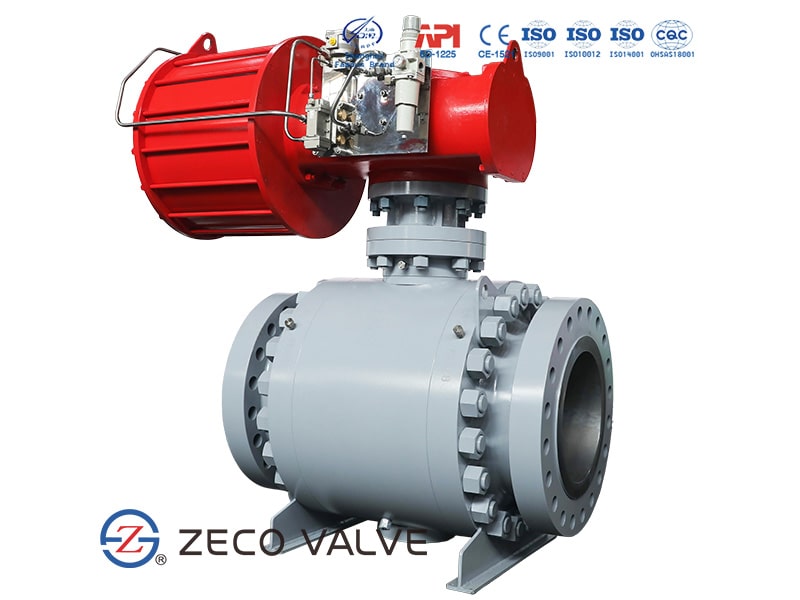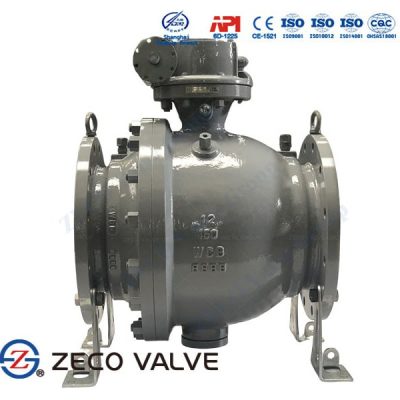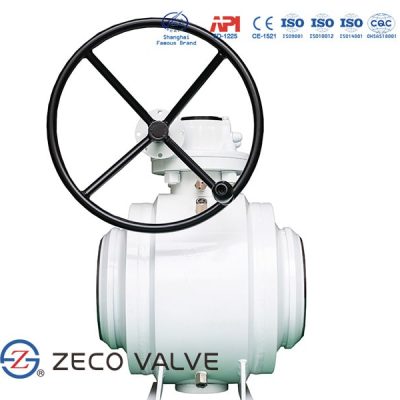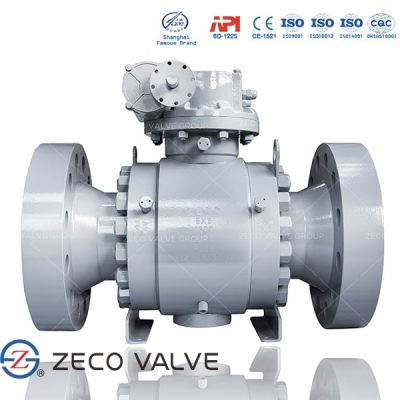Pneumatic Ball Valve
Description
Ball valves can be combined with a pneumatic actuator (pneumatic ball valves) for automation and/or for controlling remotely.
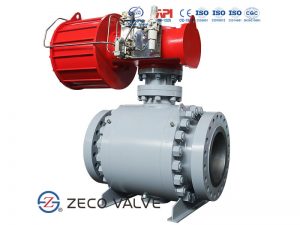
What is a Pneumatic Ball Valve?
ZECO pneumatic ball valve is composed of pneumatic actuator and ball valve named. The advantage of pneumatic ball valve is the fast switching speed, the normal switching speed can reach 0.05 seconds/time, also because of the fast switching, ZECO pneumatic ball valve is often used as a quick cut-off valve on the pipeline. Pneumatic devices are often equipped with solenoid valves, air source processing triplets, limit switch, positioner, and control box, so ZECO pneumatic ball valve and electric ball valve can also achieve remote operation.
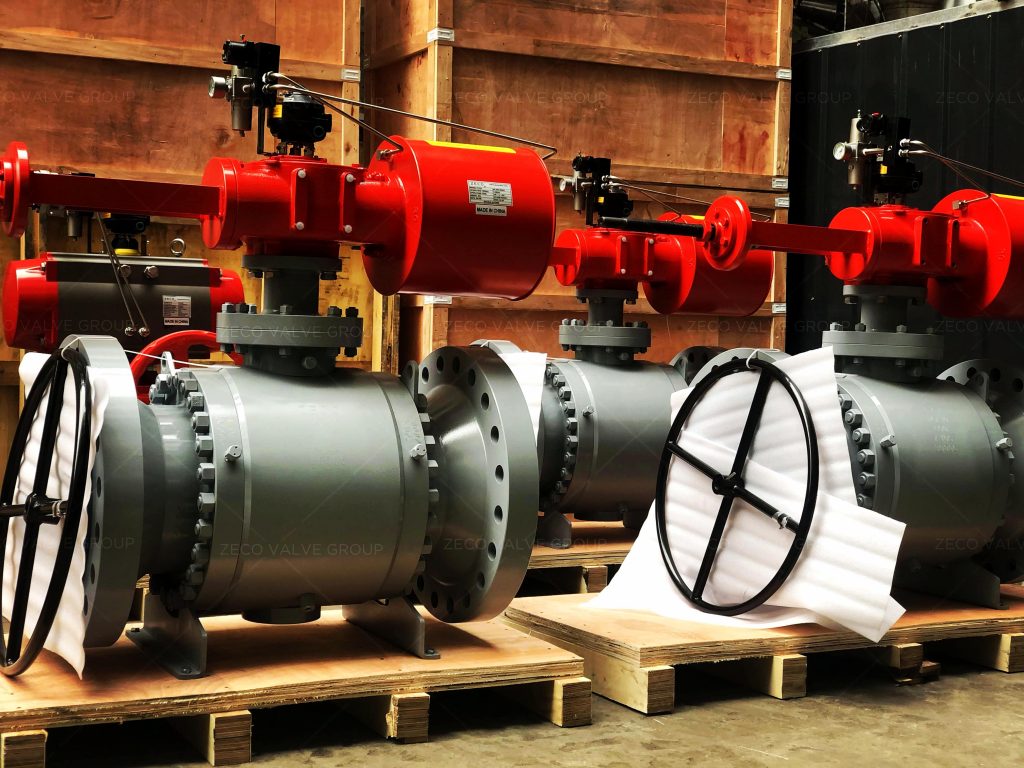
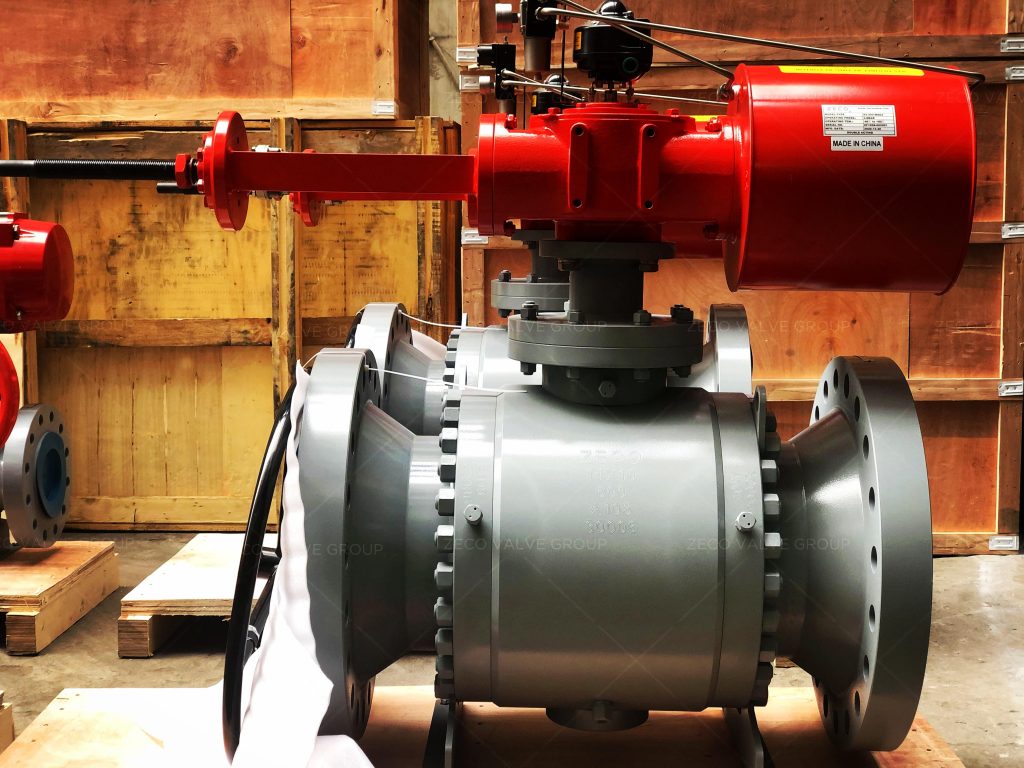
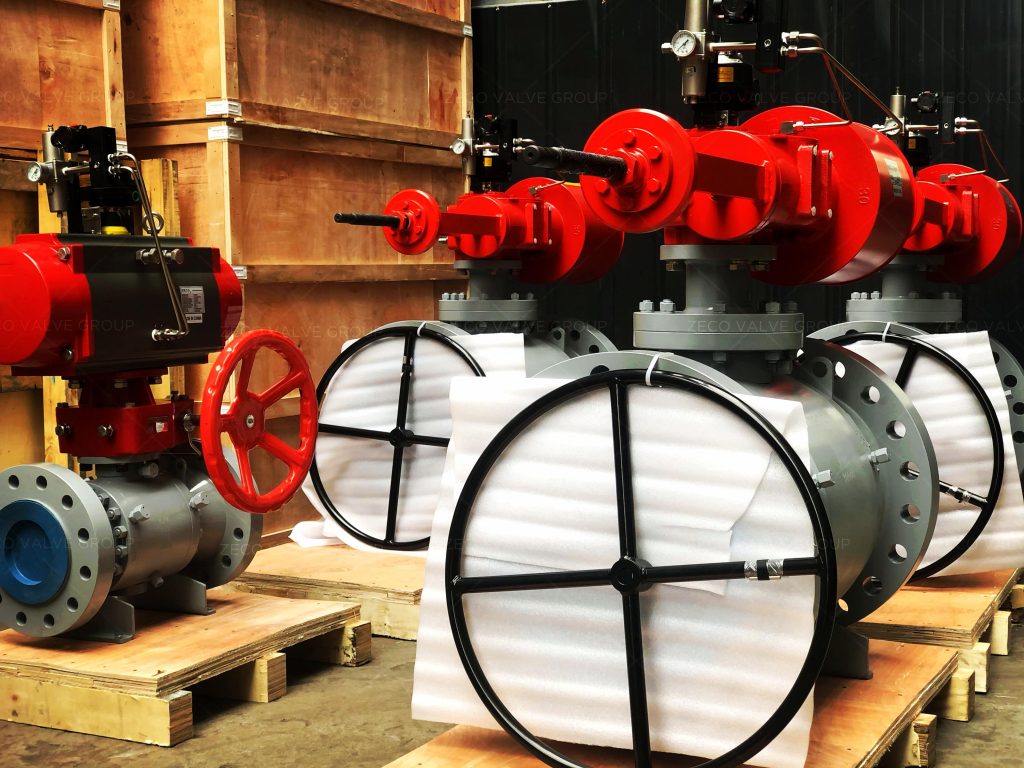
What is a Pneumatic Actuator?
Pneumatic actuators control ball valves by the conversion of compressed air energy to mechanical motion. A rotary mechanical motion is required in a ball valve for a 90 degrees turn. Pneumatic actuator ball valves can be single-acting or double-acting. A single-acting pneumatic actuator uses a single compressed air input to turn the valve and a spring to return the valve to the normal position. A double-acting pneumatic actuator has two compressed air inputs to turn the valve and return the valve to its original position.
How does a Pneumatic Ball Valve work?
The most common mechanism for a pneumatic actuator for ball valves is the rack and pinion mechanism. This comprises the rack (a linear gear) and the pinion (a circular gear). The rack is attached to a piston which is pushed by compressed air to achieve linear motion. This linear motion is converted to circular motion by the pinion. The pinion drives the stem of a ball valve to open and close positions.
To control the pneumatic actuator for ball valves, the compressed air is regulated by solenoid valves. Electrical signals from the controller energize the solenoid valve to either open or close positions allowing compressed air to flow through to both piston sides of the pneumatic actuator. The piston pushes the rack which turns the pinion connected to the stem of the ball valve.
Applications of Pneumatic Ball Valves
Pneumatic ball valves are suitable for use across numerous industries that use fluids like water, gas, air, oil, and other media. When you buy actuated ball valves, you can use them for any of the following applications:
- Industrial processes
- Chemical handling
- Manufacturing
- Food and beverage
- Wastewater handling
- Mining
- Municipal treatment facilities
- Power plants
- Energy refineries
- Clean water production
- Landfills
- Portable water
- Swimming pools
- Irrigation
Features of Pneumatic Ball Valve:
- ZECO pneumatic ball valve can realize remote centralized control, which does not need to waste energy running to the site or climbing to the height at the risk of manual control, greatly reducing the waste of personnel efficiency and ensuring the personal safety of personnel;
- ZECO pneumatic ball valve only needs an air source to make the ball rotate 90° and small torque to close the valve tightly. The inner chamber of the valve body of exactly the same size as the pipeline passage ensures minimal resistance and reduces energy waste in medium delivery;
- ZECO pneumatic ball valve manufacturing experience for many years and international advanced technology combined with the design of the double seal structure, greatly ensure the valve in a variety of pressure conditions of the sealing performance. When the medium pressure runs in the low-pressure area, the contact area between the valve seat sealing ring and the ball is small, so there is a larger sealing pressure to ensure the valve seat is reliably sealed. When the medium runs in a high position, the contact area between the seat seal ring and the ball valve increases, so the seat seal ring can withstand the greater medium thrust without damage;
- ZECO pneumatic ball valves can be selected from various brands of pneumatic actuators to meet the special requirements of customers.
Material of Pneumatic Ball Valve:
| No | Part | Material |
| 1 | Body | FORGED STEEL / CARBON STEEL / STAINLESS STEEL |
| 2 | Bonnet | FORGED STEEL / CARBON STEEL / STAINLESS STEEL |
| 3 | Ball | FORGED STEEL / STAINLESS STEEL |
| 4 | Seat | PEFE / DEVELON / PEEK / METAL |
| 5 | Stem | FORGED STEEL / STAINLESS STEEL |
| 6 | Anti-static Device | SS304 / SS316 |
| 7 | Gasket | Graphite + SS304 / SS316 |
| 8 | Bolt | ASTM A193 B7 / B8 / B8M |
| 9 | Nut | ASTM A194 2H / 8 / 8M |
| 10 | O-ring | Viton A |
| 11 | Pneumatic Actuator | SS304 / SS316 / Aluminium |
Selection of Pneumatic Accessories for Pneumatic Ball Valve
Solenoid valve
Double-acting cylinder generally with two-position five-way solenoid valve or three-position five-way solenoid valve. The single-acting cylinder can be equipped with a two-position three-way solenoid valve. The voltage can be DC24V, AC220V, etc. Explosion-proof requirements should be considered.
Limit Switch
The role of the actuator is to convert the rotation of the contact signal, and output to the control instrumentation, and feedback on the opening and closing state of the ball valve. Commonly used are mechanical and magnetic induction types. Explosion-proof requirements should also be considered.
Pneumatic triplet (FRL)
There are two and three parts, the function filtering, decompression, and oil mist. It is recommended to install them to avoid cylinder jamming due to impurities in the cylinder.
The three pneumatic accessories mentioned above are usually fitted as standard, the following are additional options.
Valve Positioner
For proportional adjustment pneumatic ball valves need to be installed, mostly used for pneumatic V-shaped ball valves. Input 4-20mA, to consider whether with the feedback output signal. Whether explosion-proof is required. There are ordinary types and intelligent types.
Handwheel
Installed between the ball valve and the cylinder, can be changed to a manual switch in case of gas source failure, to ensure system safety and not delay production.
Quick Exhaust Valve
It can speed up the opening and closing of pneumatic ball valves. Installed between the cylinder and the solenoid valve so that the gas in the cylinder does not pass through the solenoid valve and is quickly discharged.
Pneumatic Amplifier
It is installed in the air path to the cylinder to receive the pressure signal from the positioner outlet, providing a large flow rate to the actuator, used to increase the speed of valve action. By 1:1 (ratio of signal to output). Mainly used to transmit pneumatic signals to long distances (0-300m) and to reduce the effects of transmission lag.
Pneumatic Position-Keeping Valve
Mainly for the interlocking operation of the air source pressure, cutting off the valve air supply line when it is lower than the air source pressure so that the valve maintains the position before the air source failure. When the air source pressure is restored, the air supply to the cylinder is restored at the same time.

